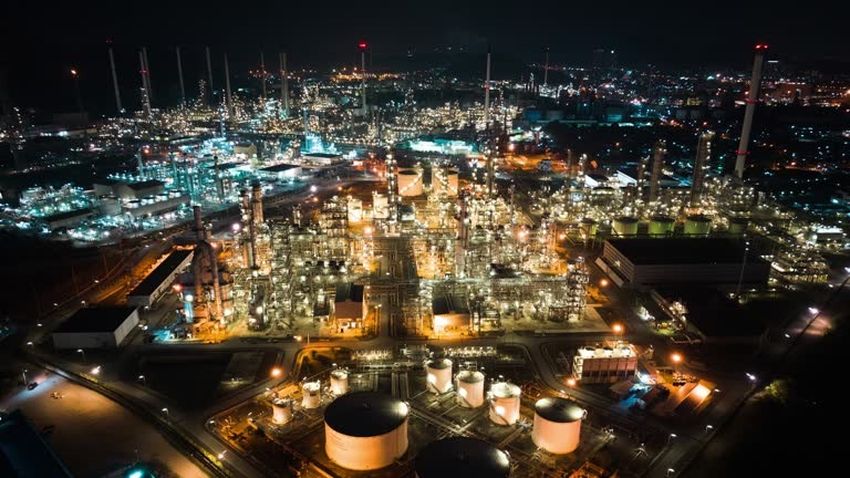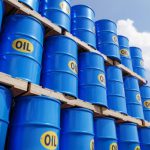When you fill up your car with gasoline or use jet fuel for a flight, have you ever wondered why fuel is so expensive? While crude oil prices play a role, the refining process itself is a major cost factor.
Turning raw crude oil into usable fuel requires high-tech infrastructure, energy-intensive processes, and strict regulations, all of which add to the final price. Let’s dive into the hidden costs behind refining fuel and understand why it’s so expensive. 🔍💰
⛽ What is Refining?
Refining is the industrial process of converting crude oil into usable products, such as:
- Gasoline (Petrol) 🚗
- Diesel 🚚
- Jet Fuel ✈️
- Kerosene 🔥
- LPG (Liquefied Petroleum Gas) 🏠
Crude oil cannot be used directly because it contains impurities and unwanted compounds. The refining process removes impurities, separates useful components, and improves fuel quality.
⚙️ The Refining Process: How Crude Oil Becomes Fuel
Refining is a multi-step, high-energy process. The key stages include:
1️⃣ Distillation (Primary Separation) 🔥
- Crude oil is heated in a fractional distillation tower.
- Different fuel types separate based on boiling points (e.g., gasoline boils at a lower temperature than diesel).
2️⃣ Cracking (Breaking Down Large Molecules) 🧪
- Heavy oil molecules are broken into smaller, more useful molecules using heat, pressure, and catalysts.
- This process creates high-demand fuels like gasoline and jet fuel.
3️⃣ Reforming & Blending (Enhancing Quality) ⚗️
- Chemical processes improve fuel octane levels for better engine performance.
- Different fuel blends (winter/summer gasoline, aviation fuel, etc.) are created.
4️⃣ Purification & Treatment (Removing Impurities) 🏭
- Sulfur, nitrogen, and heavy metals are removed to reduce pollution.
- This step is necessary for meeting environmental regulations.
Each of these steps requires high-tech equipment, large energy inputs, and specialized chemicals, making refining costly and complex.
💰 Why is Refining So Expensive?
1️⃣ High Energy Costs ⚡
Refining is an energy-intensive process that requires:
- Heat & Pressure: Distillation and cracking use massive amounts of heat.
- Electricity: Running pumps, compressors, and cooling systems.
🔹 Fact: A single refinery can consume as much electricity as a small city!
When energy prices rise, refining costs increase, leading to higher fuel prices.
2️⃣ Environmental Regulations 🌍
Governments impose strict pollution laws to reduce harmful emissions.
- Refineries must remove sulfur & carbon emissions (expensive process).
- Regulations force refineries to invest in expensive upgrades & clean technologies.
🔹 Example: The shift to low-sulfur diesel fuel increased refining costs worldwide.
Complying with environmental laws adds millions of dollars to operating expenses.
3️⃣ Equipment & Maintenance Costs 🏗️
Refineries are complex, multi-billion-dollar facilities that require:
✔️ Advanced technology (high-pressure systems, chemical reactors).
✔️ Expensive materials (heat-resistant metals, corrosion-proof tanks).
✔️ Regular maintenance to prevent breakdowns.
🔹 Fact: A single refinery shutdown for maintenance can cost millions in lost production!
4️⃣ Refining Capacity & Infrastructure 🚢
- Global fuel demand is increasing, but refining capacity is limited.
- Building a new refinery costs $10 billion+ and takes 5–10 years.
- Some countries import refined fuel instead of refining their own crude oil, adding transportation costs.
5️⃣ Supply Chain & Crude Oil Quality 🚛
- Some crude oils are “light” (easy to refine), while others are “heavy” (more expensive to process).
- If crude oil is low quality, refining it is more costly.
- Transporting crude oil from faraway sources adds to the final cost.
🔹 Example: The U.S. imports heavy crude from Canada, requiring additional refining steps, making fuel more expensive.
6️⃣ Market Factors & Profit Margins 📈
Refiners operate in a competitive market where:
- They must cover fixed costs (staff, equipment, taxes).
- Fuel prices fluctuate due to global supply & demand.
- Geopolitical issues (wars, sanctions) affect oil supply chains.
🔹 Fact: Refineries make only a few cents per gallon of gasoline but rely on huge volumes to stay profitable.
📊 How Refining Costs Affect Fuel Prices
| Cost Factor | Impact on Fuel Price |
|---|---|
| Crude Oil Price 🛢️ | The biggest factor, but refining adds extra costs |
| Energy Costs ⚡ | Higher electricity & heat costs = More expensive fuel |
| Environmental Laws 🌍 | Cleaner fuel = Higher refining costs |
| Refinery Upgrades 🏗️ | New tech & maintenance add costs |
| Transportation 🚛 | Importing crude & distributing fuel increase prices |
Even when crude oil prices drop, fuel prices may stay high due to fixed refining costs.
🚀 Future Trends: Can Refining Become Cheaper?
🔹 More Efficient Technologies 🏭
- AI & automation optimize refinery operations.
- New catalysts improve fuel yield with less energy.
🔹 Renewable Energy Integration 🌞
- Some refineries are using solar & hydrogen to reduce energy costs.
🔹 Biofuels & Synthetic Fuels 🌱
- Cleaner alternatives like biodiesel & e-fuels are gaining popularity.
🔹 Carbon Capture & Green Refining ♻️
- Some refineries are capturing CO₂ to reduce emissions.
- Future fuels may be produced with lower environmental impact.
While refining will always be expensive, new innovations could reduce costs & improve sustainability.
🎯 Conclusion
Refining crude oil into gasoline, diesel, and jet fuel is a complex, high-cost process that involves energy-intensive machinery, strict regulations, and advanced chemical engineering.
🚗 Why is fuel expensive? Because refining is:
✔️ Energy-intensive (heat, pressure, electricity).
✔️ Regulated (environmental laws add costs).
✔️ Dependent on crude oil quality (some crude is harder to refine).
✔️ Limited by infrastructure (refinery capacity is not growing fast enough).
Even though crude oil prices influence fuel costs, the hidden costs of refining play a massive role in determining how much you pay at the pump.
As technology advances, we may see more efficient, eco-friendly refining that could lower costs and reduce the environmental impact of fuel production. 🌱⚡

